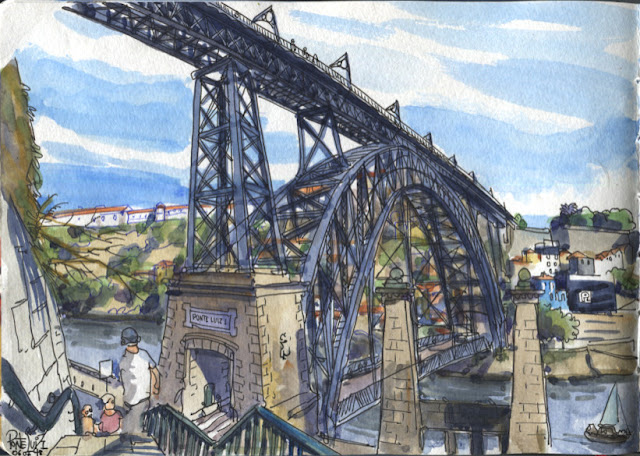
[By Paulo Mendes, Symposium Correspondent, in Porto] Showing
you Porto without mentioning one of its greatest and best known
landmarks would be a heavy and unforgivable sin! It is not Porto’s only bridge – there are five more – neither the oldest, but, for
its location and singularity, it’s undoubtedly the most famous. You
will see its image everywhere, from postcards to all kinds of
souvenirs, and then you will see it for yourself and will be amazed: The
elegant double-deck Luiz I bridge, or “Dom Luiz”, as it is popularly called, is one of the city’s two venerable iron bridges, the other
being her somewhat forgotten older sister Eiffel-built Maria Pia railway bridge, barely visible upstream from this famous counterpart, and
sadly disused after good loyal services from 1877 to 1991.
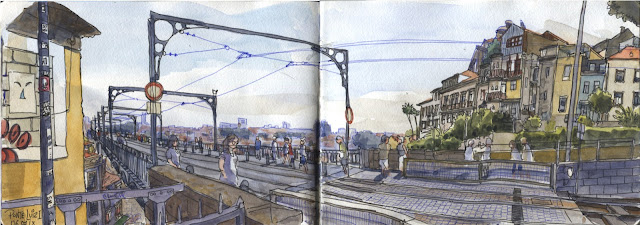
From
São Bento station (see my second post) you will see the Cathedral
and a wide avenue going up: Take the avenue, but instead of turning right
towards the cathedral, continue ahead and you will see the bridge’s upper
deck. It is shared by pedestrians and line D of the Metro. The bridge
connects Porto with the city of Vila Nova de Gaia, or simply Gaia, in
the other side. Be prepared for breathtaking views
wherever you stand!
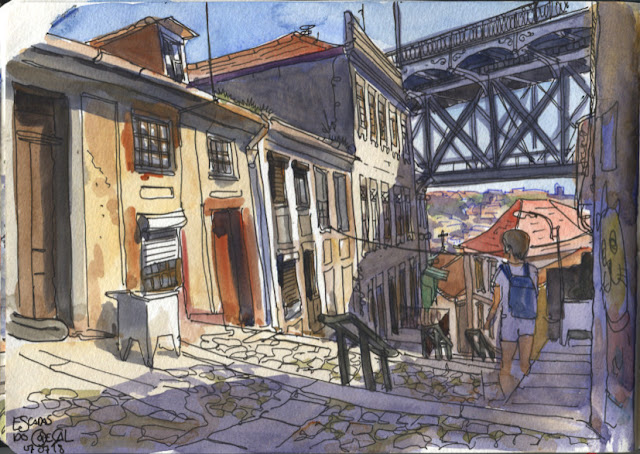
If
you’re not comfortable with heights, you may want to cross the bridge
through its lower deck. The best way to get there is by
descending the picturesque Codeçal staircases: The old worn houses and their environment offer a lot to be sketched from any angle and will be
a great compensation for the missed views. The bridge itself will end up appearing to you as shown in the first sketch.
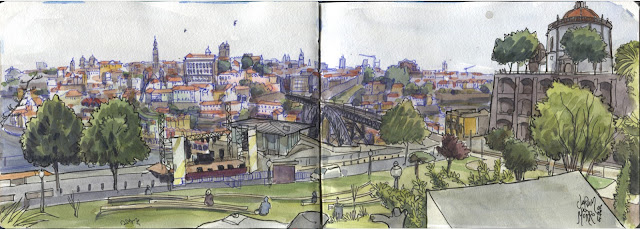
Back
to the upper level: It will take you to Gaia’s Jardim do Morro, or Hill
Garden. This sketch, from the top of the garden, makes little justice to the view towards Porto, as it
was made early in the morning when the sunshine was still absent.
Late in the afternoon, the place is usually full of people and the sunlight much more dramatic and interesting. And from the patio of Serra do Pilar monastery, at your right with its curious round church, you get an even better perspective!
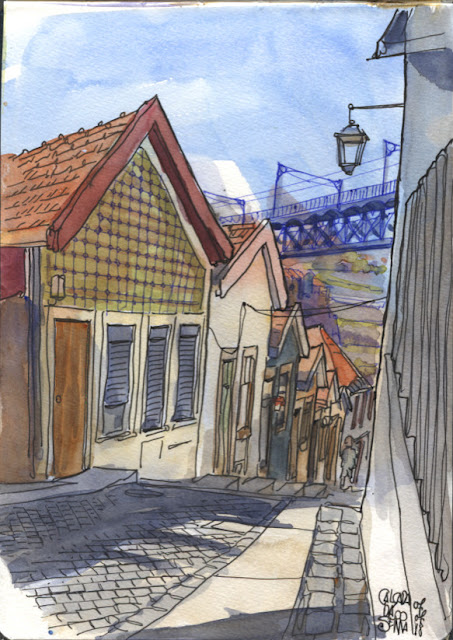
The two easiest ways to go down to Gaia’s historical quarter are by
taking the cable car, or simply descending the narrow
Calçada da Serra, ending at the entrance of the bridge’s lower deck
and the Diogo Leite riverside avenue.
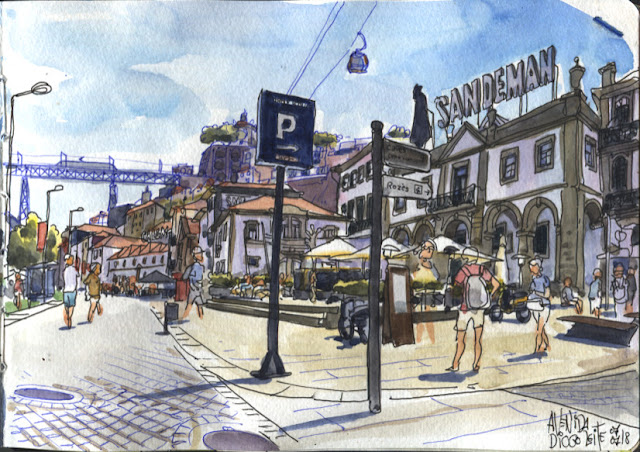
The major attractions of riverside Gaia are the view towards Porto, as you can see from the first sketch in my first post, and
especially the famous Port Wine cellars. The bustling Diogo Leite
avenue also offers a multitude of shops and restaurants, handicraft
vendors, and is the departure point of many river cruises. If you
prefer some quietness instead, and get an occasional hint of countryside, just
take one of the narrow interior side streets that give acess to some of the
wine cellars.
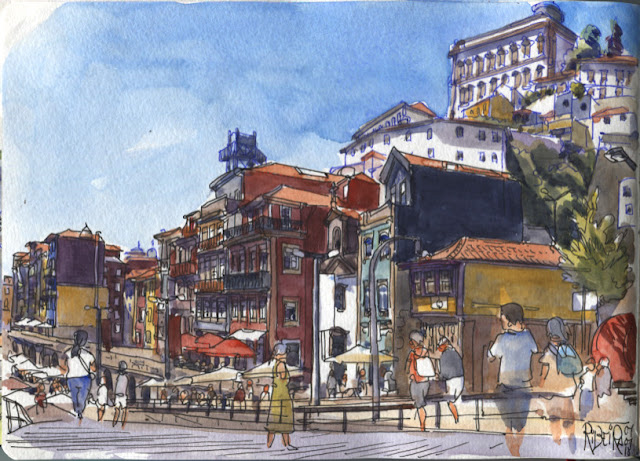
Back
to Porto afer crossing the lower bridge deck, the beautiful Ribeira
historical quarter will be waiting for you. It’s the most visited
place in the city and a sketching paradise, with so much to choose from old architecture to people, colorful market stands, boats, narrow
medieval streets and arches… It is not difficult to look around without knowing where to start!
If
you happen to be in Porto next 14th
July, you may not want to miss the Symposium warm-up sketchcrawl,
organised by UskP-Norte: It will start at 3PM from this same point at Ribeira,
close to the bridge, and will end at 5.30PM in Alfândega, at the doorstep of the
Symposium hub. Shall we see each other there?
Share
Recent Posts
#USkSeptemberPrompts2024
Each day this September, explore a new prompt to kickstart...
Read MoreDrawing Attention September 2024
Drawing Attention, the official zine of the Urban Sketchers organization, communicates...
Read MoreCall for Urban Sketchers Vice President (Volunteer Position)
Want to make a difference? Have a knack for leadership? Keen...
Read MoreArriving in Buenos Aires – What to Expect
Figuring out what the local currency is and how best to...
Read More